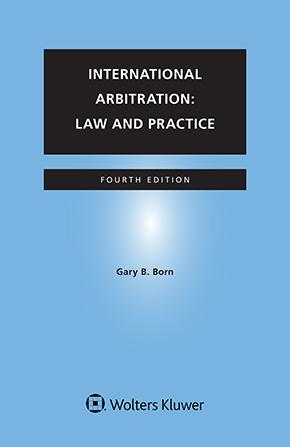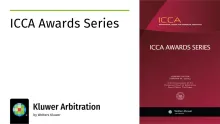Reflections on Arbitration in New Zealand: Recapping AMINZ Arbitration Day 2025
July 28, 2025
On 13 June 2025, the Arbitrators’ and Mediators’ Institute of New Zealand (“AMINZ”) convened its annual Arbitration Day, reaffirming New Zealand’s reputation as an arbitration-friendly jurisdiction and exploring how the field can continue to evolve to meet the needs of users in a changing global landscape.
Building on a Strong Foundation
Arbitration in New Zealand is thriving, underpinned by a robust legislative framework and a judiciary supportive of party autonomy and arbitral processes. The day’s theme—building on this strong foundation—was timely, as New Zealand’s Arbitration Act 1996 (the “Act”) approaches its 30th anniversary. The Act, closely based on the UNCITRAL Model Law, has been well tested through the courts and is widely regarded as providing a solid basis for both domestic and international arbitration.
Legislative Reform: Learning from Abroad
The first panel, chaired by Daniel Kalderimis KC, focused on potential amendments to the Act in light of recent reforms to the English Arbitration Act. Nicola Swan and Michelle Mau provided a comparative analysis, highlighting the rationale behind the English reforms as set out in the Law Commission’s report. This prompted a lively discussion about whether similar changes—such as an express power for early dismissal—should be considered in New Zealand. The consensus among participants was that New Zealand law could benefit from such an express power.
The Hon Paul Heath KC offered valuable historical context, recalling the drafting of the Act and, in particular, the introduction of its comprehensive confidentiality regime in 2007. This regime remains one of the most comprehensive of its kind, reflecting the strong preference for privacy in New Zealand arbitration. However, Mr Kalderimis KC provocatively questioned whether a detailed codified approach is still desirable in an era where transparency and flexibility, including as to the parameters of confidentiality, as well as the development of arbitral jurisprudence, are increasingly valued? The English Law Commission did not think so. The consensus among participants was that confidentiality remains a key attraction for users in New Zealand, and any move to dilute these protections should be approached with caution.
The panel also engaged in a thoughtful debate on the duties of impartiality and independence. New Zealand law requires arbitrators to disclose any circumstances likely to give rise to justifiable doubts as to their impartiality or independence, and these duties are foundational to the legitimacy of the arbitral process. The discussion reflected on the English Law Commission’s decision not to include a separate independence limb of the test, and whether New Zealand should follow suit. The debate underscored the importance of continually reviewing the legislative regime to ensure it remains fit for purpose and responsive to evolving expectations.
With other jurisdictions, including Singapore, also considering amendments to their arbitration legislation, the conference provided a timely opportunity to reflect on whether further reforms are needed as the Act reaches its third decade. The willingness to engage in open debate about the future direction of arbitration law is a testament to the maturity and dynamism of New Zealand’s arbitration community.
The User Perspective: What Works and What Doesn’t
The second panel, chaired by Marika Eastwick-Field, shifted the focus to the practical realities of arbitration from the user’s perspective. Experienced arbitration barristers, Sarah Wroe and Julian Long, shared insights on the “dos and don’ts” of arbitration, emphasising the importance of making the most of arbitration’s procedural flexibility and efficiency as well as the need for arbitrators to understand and tailor the process to suit the commercial needs of the parties. Other topics discussed ranged from managing the arbitration dynamic when lay litigants are involved through to utilising new technologies to assist with better process and decision-making.
A valuable contribution was also provided by Shane Hussey, a chartered accountant and seasoned expert witness, who offered a candid assessment of what works well in arbitration and what does not from an expert’s perspective. Mr Hussey highlighted the need for arbitrators to manage expert evidence effectively, including offering additional guidance and process on (early) expert caucusing to ensure a process that is both fair and efficient.
Insights from the Aotearoa New Zealand Arbitration Survey
Royden Hindle, Anna Kirk and Diana Qiu have recently published their report of the Second Aotearoa New Zealand Arbitration Survey, providing statistical data on arbitrations that commenced in 2021-2022. This follows the report on the Inaugural Survey which reported on arbitrations that commenced in 2019-2020.
The results of the survey were presented at Arbitration Day. Thirty-five arbitrators responded to the survey, recording 159 arbitral appointments over the two-year period. The vast majority of these appointments were domestic arbitrations conducted under the Act, reflecting the Act’s central role in New Zealand’s dispute resolution landscape. Although most domestic arbitration is ad hoc, there was a noticeable increase in the number of arbitrations under institutional rules compared to the Inaugural Survey, which may reflect growing familiarity with institutional arbitration in New Zealand as well as a desire for fixed fee arbitration in some contexts.
The survey revealed that lease and other property-related disputes were the most common subject matter for arbitration, followed by contract and commercial disputes, and construction disputes. One of the most striking findings of the survey was the efficiency of the arbitral process: the average time from appointment to the issuance of a substantive award was 10.65 months, with a median of just seven months. This is considerably faster than the timeframes typically associated with litigation in the High Court of New Zealand, underscoring arbitration’s appeal as a timely dispute resolution mechanism.
Cultural Context and the Importance of Procedural Flexibility
The afternoon sessions began with a case law update, followed by a thought-provoking panel led by Rachael Jones on the procedural flexibility of arbitration and its adaptability to diverse cultural contexts. Renika Siciliano highlighted the potential for arbitration to provide tailored procedures for disputes involving specific cultural issues, including those involving Māori customary law (tikanga), which the Supreme Court of New Zealand has confirmed forms part of the common law of New Zealand. The ability for parties to choose the laws or principles to be applied by the tribunal is a significant advantage of arbitration, particularly in disputes where tikanga is relevant.
The panel discussed the challenges of understanding and applying tikanga, including where parties’ positions differ as to the applicable tikanga, and emphasised the value of expert advisors to assist tribunals in navigating these complexities. This reflects a broader trend in New Zealand arbitration: the willingness to adapt procedures to ensure fairness and legitimacy, especially when cultural sensitivities are at stake. AMINZ has been exploring the possibility of creating a special protocol for tikanga disputes and the discussion at Arbitration Day highlighted the value that such a protocol could provide in the New Zealand context.
Recent developments have also focused on the increasing involvement of Asian parties in disputes. New research is being conducted into potential barriers to settlement for Asian litigants in civil disputes. Emmolina May provided insights into the Asian perspective on disputes, particularly in the construction sector, and the importance of understanding cultural context for legal advisors, parties, and witnesses. The discussion explored how arbitration and mediation can be leveraged to resolve such disputes effectively, and how procedural choices can encourage appropriate dispute settlement mechanisms among Asian parties.
Tim Lindsay concluded the session by reflecting on the importance of shaping procedure to enhance the legitimacy of arbitral outcomes, especially when cultural sensitivities are involved. Drawing on his experience in the international context, he discussed concrete examples of cases he had been involved in where considerable effort was expended on shaping the procedure and getting “buy-in” from the parties to ensure the outcome of the arbitration was accepted by all. He illustrated how procedural flexibility can be crucial in building trust and ensuring that the process is seen as fair and responsive to the parties’ needs.
This panel prompted lively discussion as many of those in the room had questions based on experiences in their own practice. The discussion highlighted the need for more research and understanding in this area and the importance of procedural flexibility to the legitimacy of arbitration.
Looking Ahead: Challenges and Opportunities
The discussions throughout the day reflected a broader trend in New Zealand arbitration: a commitment to continuous improvement and responsiveness to user needs. While the legislative framework is robust, practical challenges remain, together with the need to evolve to meet the changing disputes climate. The growing use of mediation as a complementary dispute resolution mechanism was also noted, underscoring the importance of offering a range of options to commercial parties. As New Zealand’s arbitration community looks to the future, the willingness to engage in critical self-reflection and to learn from international developments will be key to ensuring that arbitration remains an attractive option for resolving commercial disputes.
You may also like











